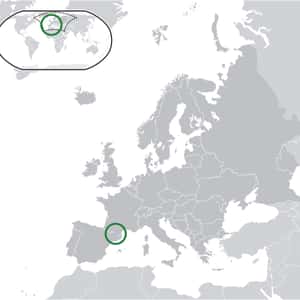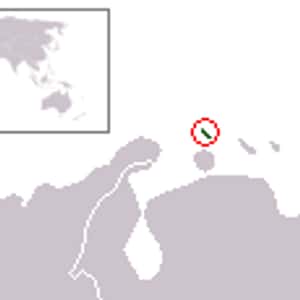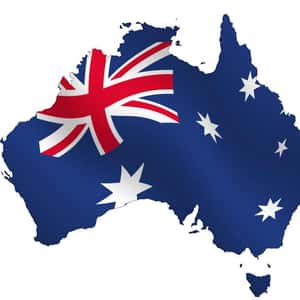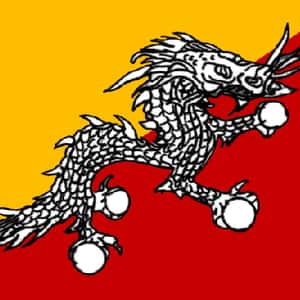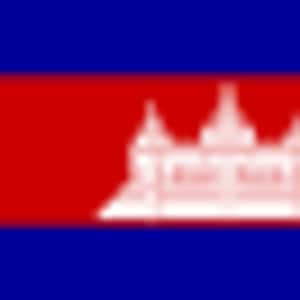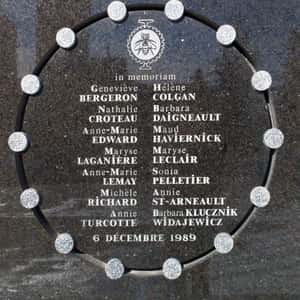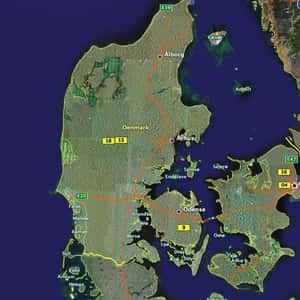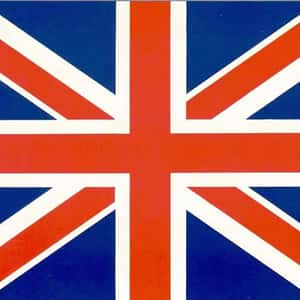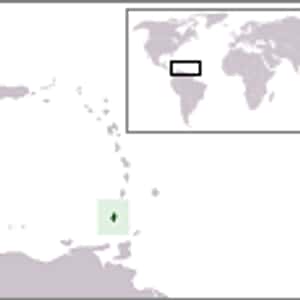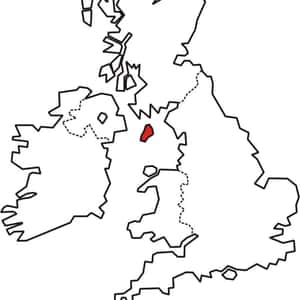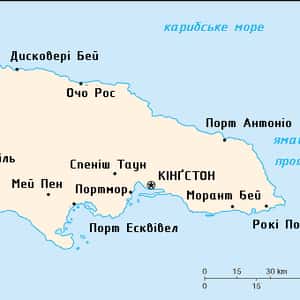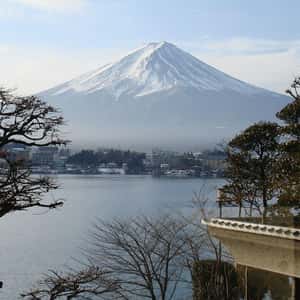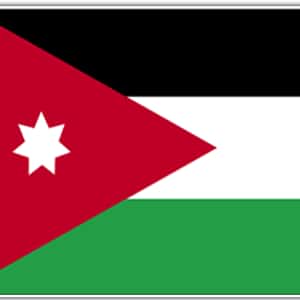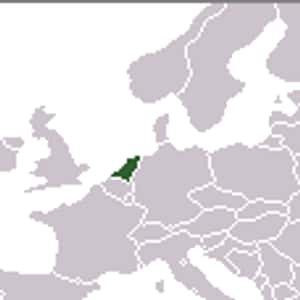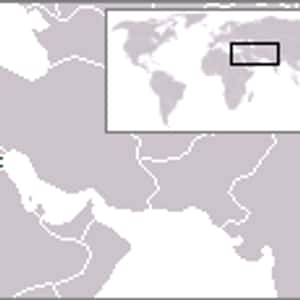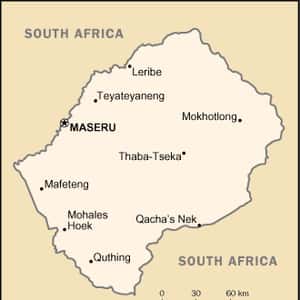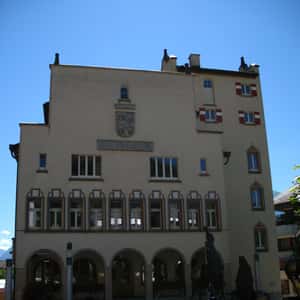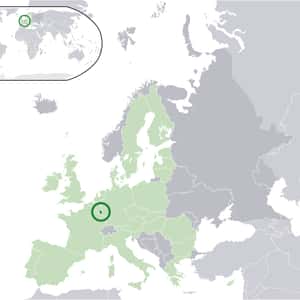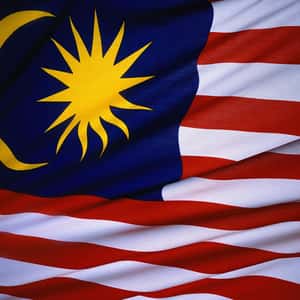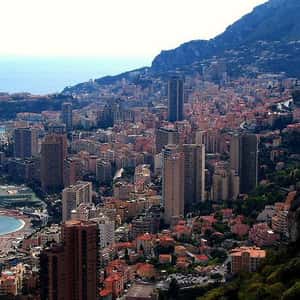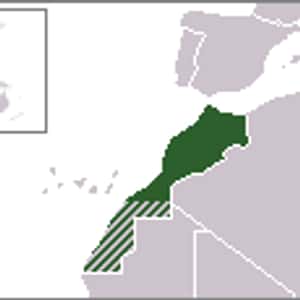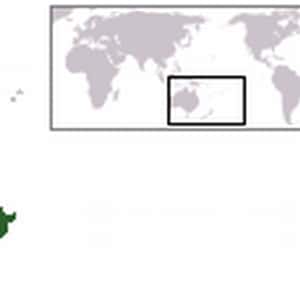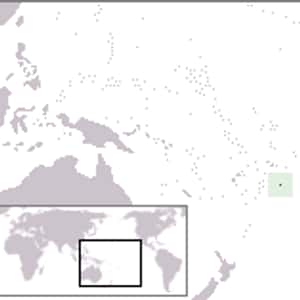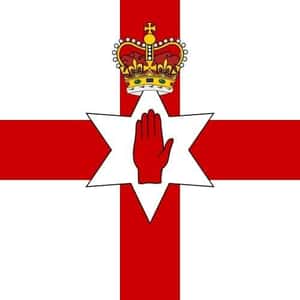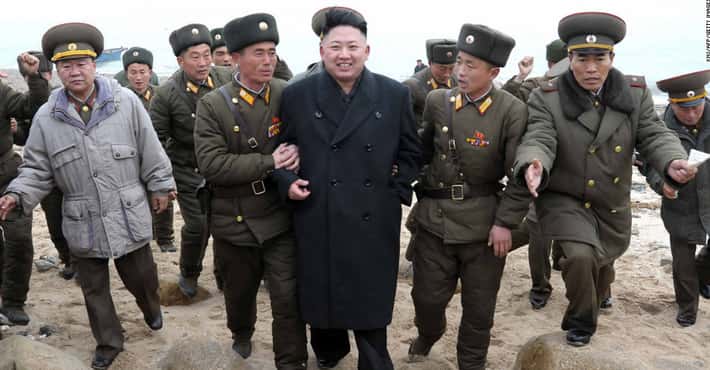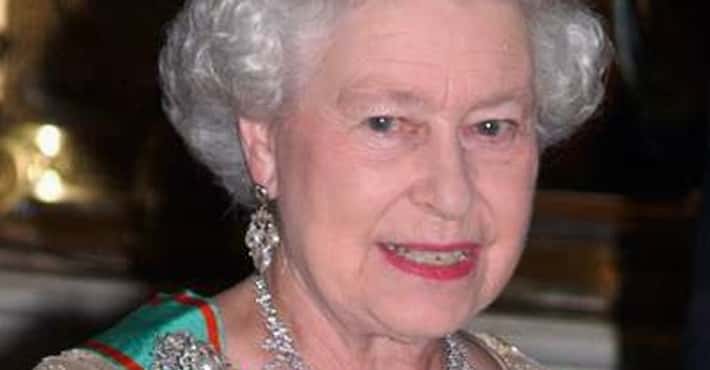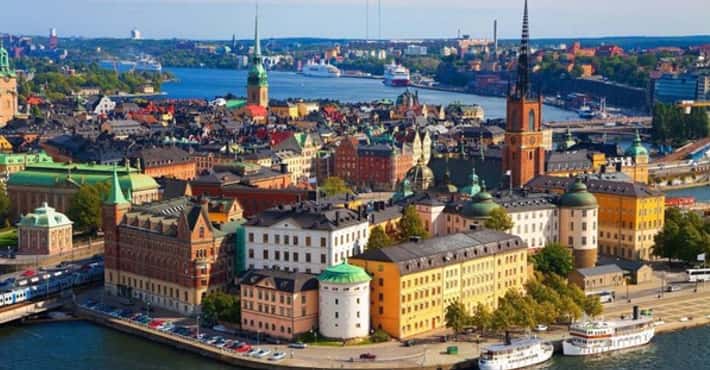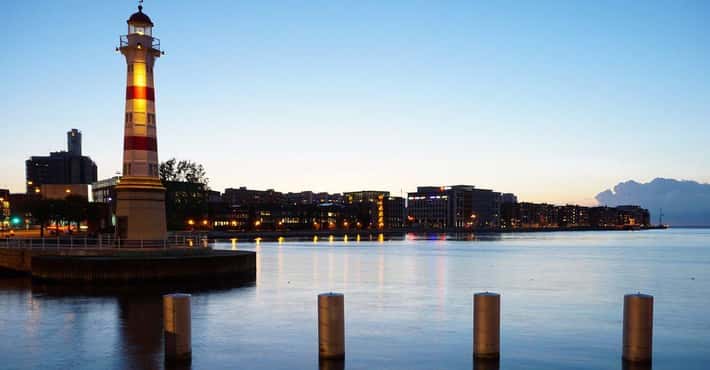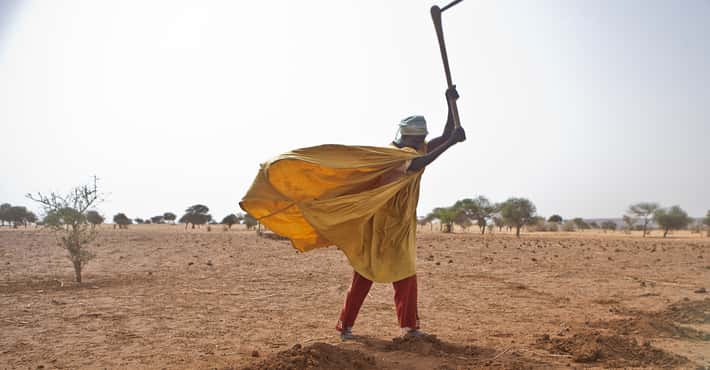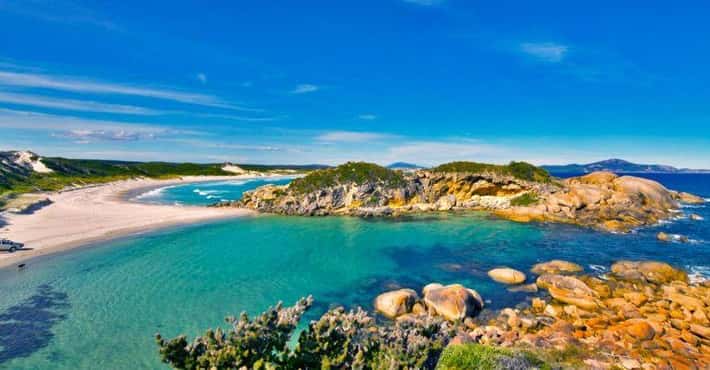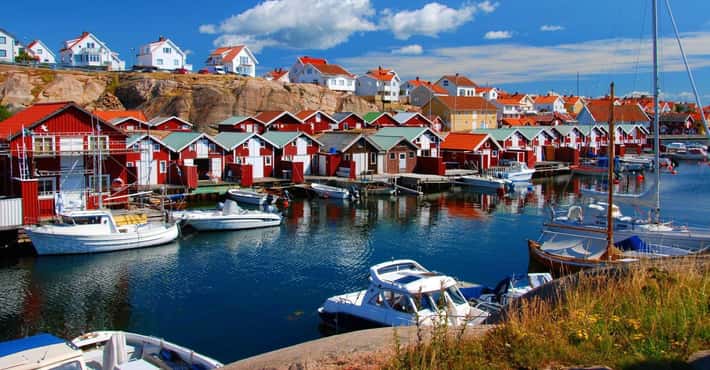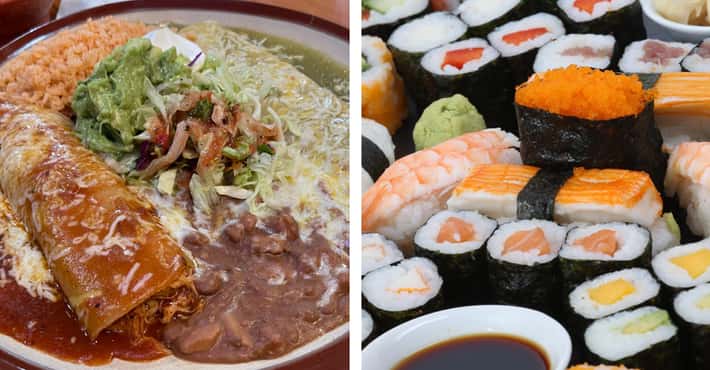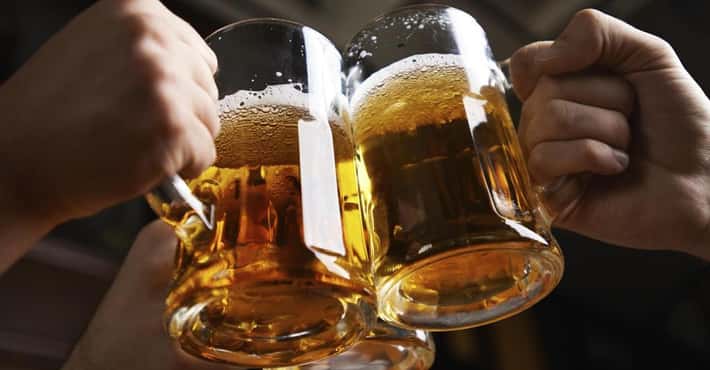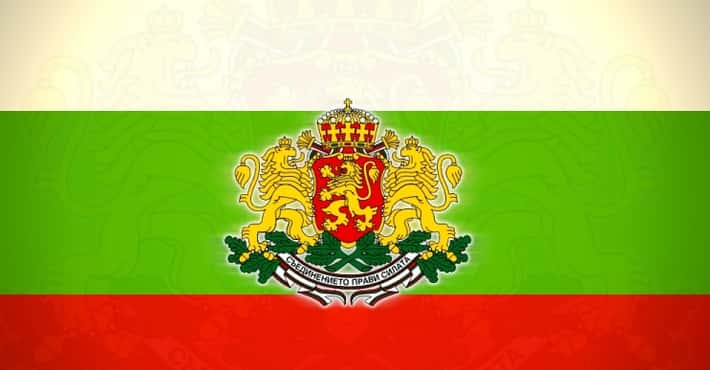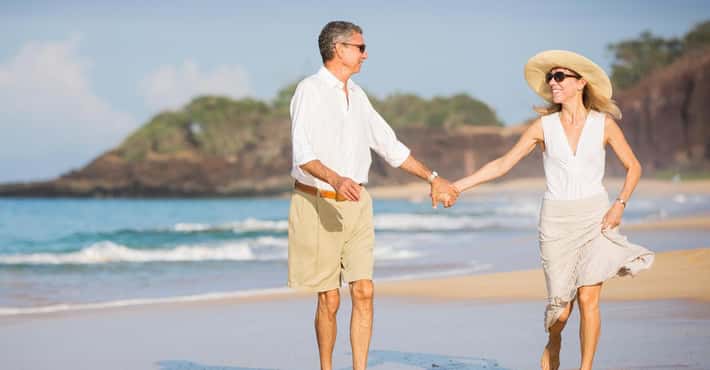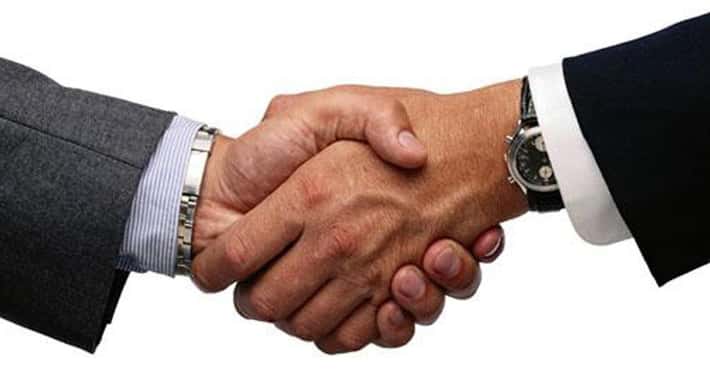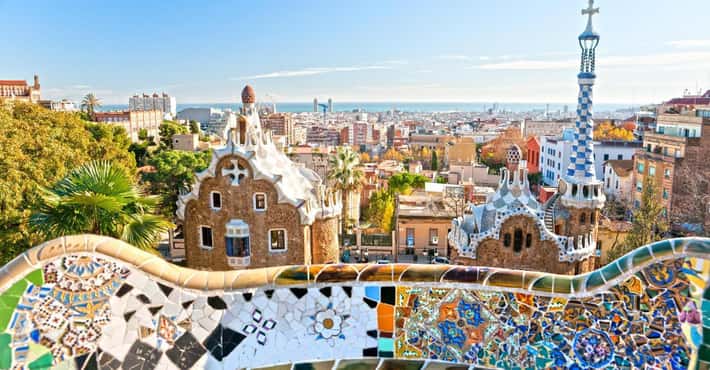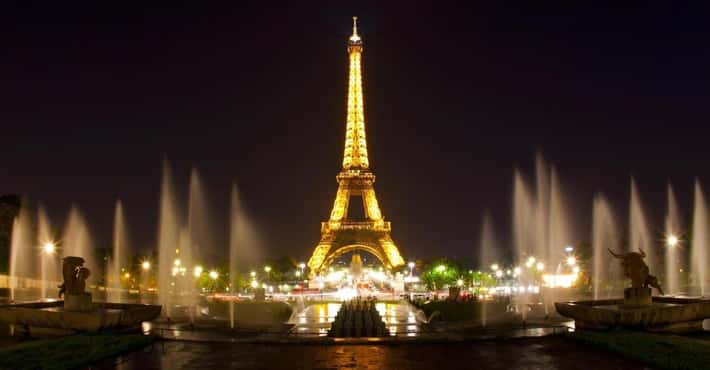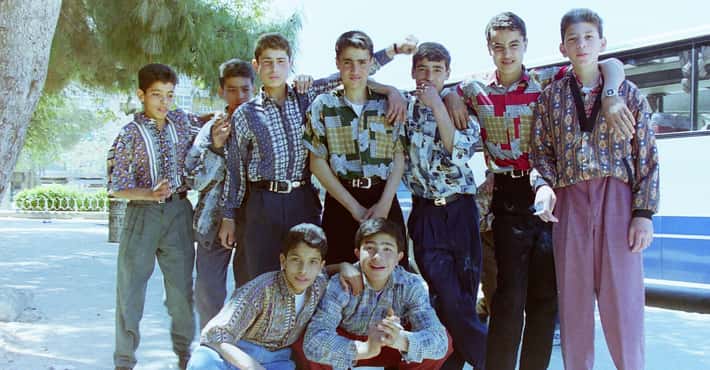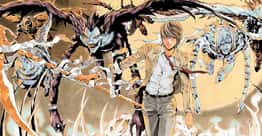Countries Ruled by Constitutional Monarchy
List of countries, nations and states governed or ruled by a constitutional monarchy, sorted alphabetically. In some cases nations may have multiple ruling bodies or government types, meaning they're not exclusively countries that are governed by constitutional monarchy. This list of countries that use constitutional monarchy as their form of government contains various bits of information about each nation, such as the official language or currency of the country. If you're looking for the names of countries with constitutional monarchy governments then you're in the right place.
The list you're viewing is made up of many different items, like Saint Lucia and Lesotho.
This list answers the questions, "Which countries are ruled by constitutional monarchy?" and "Which countries are governed by constitutional monarchy?"- Andorra la VellaAndorra, officially the Principality of Andorra, also called the Principality of the Valleys of Andorra, is a sovereign landlocked microstate in Southwestern Europe, located in the eastern Pyrenees mountains and bordered by Spain and France. It is the sixth smallest nation in Europe, having an area of 468 km² and a population of ca. 85,000. Its capital, Andorra la Vella, is the highest capital city in Europe, at an elevation of 1,023 metres above sea level. The official language is Catalan, although Spanish, Portuguese, and French are also commonly spoken. Created under a charter in A.D. 988, the present Principality was formed in A.D. 1278. It is known as a principality as it is a monarchy headed by two Co-Princes – the Spanish/Roman Catholic Bishop of Urgell and the President of France. Andorra's tourism services an estimated 10.2 million visitors annually. It is not a member of the European Union, but the euro is the de facto currency. It has been a member of the United Nations since 1993. The people of Andorra have one of the highest life expectancies in the world and as of December 2014, according to The Lancet, has the highest in the world - 81 years in 2013.More Andorra
- Dig Deeper...Nations That Are 'Against' Death Penalty
- And Deeper...Life Expectancy by Country | Life Expectancy Trends
- #137 of 223 onThe Prettiest Flags in the World
- OranjestadAruba is an island in the southern Caribbean Sea, located about 1,600 kilometres west of the Lesser Antilles and 29 kilometres north of the coast of Venezuela. It measures 32 kilometres long from its northwestern to its southeastern end and 10 kilometres across at its widest point. Together with Bonaire and Curaçao, Aruba forms a group referred to as the ABC islands. Collectively, Aruba and the other Dutch islands in the Caribbean are often called the Netherlands Antilles or the Dutch Caribbean. Aruba is one of the four constituent countries that form the Kingdom of the Netherlands, along with the Netherlands, Curaçao and Sint Maarten. The citizens of these countries all share a single nationality: Dutch. Aruba has no administrative subdivisions, but, for census purposes, is divided into eight regions. Its capital is Oranjestad. Unlike much of the Caribbean region, Aruba has a dry climate and an arid, cactus-strewn landscape. This climate has helped tourism as visitors to the island can reliably expect warm, sunny weather. It has a land area of 179 km² and is densely populated, with a total of 102,484 inhabitants at the 2010 Census. It lies outside Hurricane Alley.More Aruba
- Dig Deeper...Life Expectancy by Country | Life Expectancy Trends
- #144 of 223 onThe Prettiest Flags in the World
- #36 of 161 onThe Most Beautiful Countries In The World
- CanberraAustralia, officially the Commonwealth of Australia, is an Oceanian country comprising the mainland of the Australian continent, the island of Tasmania, and numerous smaller islands. It is the world's sixth-largest country by total area. Neighbouring countries include Indonesia, East Timor and Papua New Guinea to the north; the Solomon Islands and Vanuatu to the north-east; and New Zealand to the south-east. For at least 40,000 years before the first British settlement in the late 18th century, Australia was inhabited by indigenous Australians, who spoke languages grouped into roughly 250 language groups. After the European discovery of the continent by Dutch explorers in 1606, Australia's eastern half was claimed by Great Britain in 1770 and initially settled through penal transportation to the colony of New South Wales from 26 January 1788. The population grew steadily in subsequent decades; the continent was explored and an additional five self-governing crown colonies were established. On 1 January 1901, the six colonies federated, forming the Commonwealth of Australia.More Australia
- Dig Deeper...The Funniest Australian Movies Ever Made
- And Deeper...The Most Corrupt Countries in the World
- #44 of 223 onThe Prettiest Flags in the World
- ManamaBahrain, officially the Kingdom of Bahrain, is a small island country situated near the western shores of the Persian Gulf. It is an archipelago with Bahrain Island, the largest land mass, at 55 km long by 18 km wide. Saudi Arabia lies to the west and is connected to Bahrain by the King Fahd Causeway while Iran lies 200 km to the north across the Persian Gulf. The peninsula of Qatar is to the southeast across the Gulf of Bahrain. The population in 2010 stood at 1,234,571, including 666,172 non-nationals. Bahrain is the site of the ancient land of the Dilmun civilisation. Bahrain was one of the earliest areas to convert to Islam in 628 AD. Following a period of Arab rule, Bahrain was occupied by the Portuguese in 1521, who in turn were expelled in 1602 by Shah Abbas I of the Safavid dynasty under the Persian Empire. In 1783, the Bani Utbah clan captured Bahrain from Nasr Al-Madhkur and has since been ruled by the Al Khalifa royal family, with Ahmed al Fateh as Bahrain's first hakim. In the late 1800s, following successive treaties with the British, Bahrain became a protectorate of the United Kingdom. In 1971, Bahrain declared independence.More Bahrain
- Dig Deeper...The Most Corrupt Countries in the World
- And Deeper...Kingdoms And Monarchs Of The World
- #186 of 223 onThe Prettiest Flags in the World
- BridgetownBarbados is a sovereign island country in the Lesser Antilles. It is 34 kilometres in length and up to 23 kilometres in width, covering an area of 432 square kilometres. It is situated in the western area of the North Atlantic and 100 kilometres east of the Windward Islands and the Caribbean Sea; therein, it is about 168 kilometres east of the islands of Saint Vincent and the Grenadines and 400 kilometres north-east of Trinidad and Tobago. Barbados is outside of the principal Atlantic hurricane belt. Barbados was visited by Spanish navigators in the late 15th century and claimed for the Spanish Crown. It first appears on a Spanish map from 1511. The Portuguese visited the island in 1536, but they left it unclaimed, with their only remnants being an introduction of wild hogs for a good supply of meat whenever the island was visited. An English ship, the Olive Blossom, arrived in Barbados in 1625; its men took possession of it in the name of King James I. In 1627 the first permanent settlers arrived from England, and it became an English and later British colony. In 1966 Barbados became an independent state and Commonwealth realm, retaining Queen Elizabeth II as Head of State.More Barbados
- Dig Deeper...The Most Corrupt Countries in the World
- And Deeper...The Top 50 Healthcare Systems Around The World
- #37 of 223 onThe Prettiest Flags in the World
- BelmopanBelize is a nation-state on the eastern coast of Central America. It is the only country in Central America whose official language is English, though Belizean Creole and Spanish are also commonly spoken. Belize is bordered on the north by Mexico, on the south and west by Guatemala, and on the east by the Caribbean Sea. Its mainland is about 290 km long and 110 km wide. With 22,800 square kilometres of land and as of 2014 a population of 340,844, Belize has the lowest population density in Central America. The country's population growth rate of 1.97% per year is the second highest in the region and one of the highest in the Western Hemisphere. Belize's abundance of terrestrial and marine species and its diversity of ecosystems give it a key place in the globally significant Mesoamerican Biological Corridor. Belize has a diverse society, composed of many cultures and languages that reflect its rich history. Originally part of the British Empire, it shares a common colonial history with other Anglophone Caribbean countries. From 1862 to 1973 the area went by the name of British Honduras.More Belize
- Dig Deeper...Life Expectancy by Country | Life Expectancy Trends
- And Deeper...Countries with Best Sanitation Facilities
- #159 of 223 onThe Prettiest Flags in the World
- ThimphuBhutan, officially the Kingdom of Bhutan, is a landlocked country in South Asia at the eastern end of the Himalayas. It is bordered to the north by China and to the south, east and west by India. To the west, it is separated from Nepal by the Indian state of Sikkim, while farther south it is separated from Bangladesh by the Indian states of Assam and West Bengal. Bhutan's capital and largest city is Thimphu. At that time the lama and military leader Ngawang Namgyal, the first Zhabdrung Rinpoche, who was fleeing religious persecution in Tibet, unified the area and cultivated a distinct Bhutanese .More Bhutan
- Dig Deeper...The Most Corrupt Countries in the World
- And Deeper...World Poverty: The Poorest Countries In The World
- #19 of 223 onThe Prettiest Flags in the World
- Phnom PenhCambodia, officially known as the Kingdom of Cambodia and once known as the Khmer Empire, is a country located in the southern portion of the Indochina Peninsula in Southeast Asia. Its total landmass is 181,035 square kilometres, bordered by Thailand to the northwest, Laos to the northeast, Vietnam to the east, and the Gulf of Thailand to the southwest. With a population of over 15 million, Cambodia is the 69th most populous country in the world. The official religion is Theravada Buddhism, practiced by approximately 95 percent of the population. The country's minority groups include Vietnamese, Chinese, Chams, and 30 hill tribes. The capital and largest city is Phnom Penh, the political, economic, and cultural center of Cambodia. The kingdom is a constitutional monarchy with Norodom Sihamoni, a monarch chosen by the Royal Throne Council, as head of state. The head of government is Hun Sen, who is currently the longest serving non-royal leader in South East Asia and has ruled Cambodia for over 25 years. Cambodia's ancient name is "Kambuja".More Cambodia
- Dig Deeper...The Most Corrupt Countries in the World
- And Deeper...World Poverty: The Poorest Countries In The World
- #76 of 223 onThe Prettiest Flags in the World
- OttawaCanada is a country in North America consisting of ten provinces and three territories. Located in the northern part of the continent, it extends from the Atlantic to the Pacific and northward into the Arctic Ocean. Covering 9.98 million square kilometres in total, Canada is the world's second-largest country by total area and the fourth-largest country by land area. Its common border with the United States forms the world's longest land border. The land that is now Canada has been inhabited for millennia by various Aboriginal peoples. Beginning in the late 15th century, British and French colonies were established on the region's Atlantic coast. As a consequence of various conflicts, the United Kingdom gained and lost North American territories until left, in the late 18th century, with what mostly comprises Canada today. Pursuant to the British North America Act, on July 1, 1867, three colonies joined to form the autonomous federal Dominion of Canada. This began an accretion of provinces and territories to the new self-governing Dominion.More Canada
- Dig Deeper...The Top Stadiums in Canada
- And Deeper...The Most Corrupt Countries in the World
- #6 of 223 onThe Prettiest Flags in the World
- AvaruaThe Cook Islands is an island country in the South Pacific Ocean in free association with New Zealand. It comprises 15 islands whose total land area is 240 square kilometres. The Cook Islands' Exclusive Economic Zone, however, covers 1,800,000 square kilometres of ocean. The Cook Islands' defence and foreign affairs are the responsibility of New Zealand, which is exercised in consultation with the Cook Islands. In recent times, the Cook Islands have adopted an increasingly independent foreign policy. Although Cook Islanders are citizens of New Zealand, they have the status of Cook Islands nationals, which is not given to other New Zealand citizens. The Cook Islands' main population centres are on the island of Rarotonga, where there is an international airport. There is a larger population of Cook Islanders in New Zealand, particularly the North Island. In the 2006 census, 58,008 self-identified as being of ethnic Cook Islands Māori descent. With about 100,000 visitors travelling to the islands in the 2010–11 financial year, tourism is the country's main industry, and the leading element of the economy, ahead of offshore banking, pearls, and marine and fruit exports.
- CopenhagenDenmark is a Scandinavian country in Northern Europe. The southernmost of the Nordic countries, it is located southwest of Sweden and south of Norway, and bordered to the south by Germany. The Kingdom of Denmark is a sovereign state that comprises Denmark and two autonomous constituent countries in the North Atlantic Ocean: the Faroe Islands and Greenland. Denmark proper has an area of 43,094 square kilometres, and a population of 5,659,715. The country consists of a peninsula, Jutland, and the Danish archipelago of 443 named islands, of which around 70 are inhabited. The islands are characterised by flat, arable land and sandy coasts, low elevation and a temperate climate. The unified kingdom of Denmark emerged in the 10th century as a proficient seafaring nation in the struggle for control of the Baltic Sea. Danish rule over the personal Kalmar Union, established in 1397, ended with Swedish secession in 1523. However, Denmark still kept a union over Norway which lasted until its dissolution in 1814. Denmark inherited an expansive colonial empire from this union, of which the Faroe Islands and Greenland are remnants.More Denmark
- LondonEngland is a country that is part of the United Kingdom. It shares land borders with Scotland to the north and Wales to the west. The Irish Sea lies northwest of England and the Celtic Sea lies to the southwest. England is separated from continental Europe by the North Sea to the east and the English Channel to the south. The country covers much of the central and southern part of the island of Great Britain, which lies in the North Atlantic; and includes over 100 smaller islands such as the Isles of Scilly, and the Isle of Wight. The area now called England was first inhabited by modern humans during the Upper Palaeolithic period, but takes its name from the Angles, one of the Germanic tribes who settled during the 5th and 6th centuries. England became a unified state in the 10th century, and since the Age of Discovery, which began during the 15th century, has had a significant cultural and legal impact on the wider world.More England
- Dig Deeper...The Best English Actresses Working Today
- And Deeper...The Best English Actors Working Today
- #50 of 223 onThe Prettiest Flags in the World
- St. George'sGrenada is an island country consisting of Grenada itself and six smaller islands at the southern end of the Grenadines in the southeastern Caribbean Sea. Grenada is located northwest of Trinidad and Tobago, northeast of Venezuela, and southwest of Saint Vincent and the Grenadines. Grenada is also known as the "Island of Spice" because of the production of nutmeg and mace crops of which it is one of the world's largest exporters. Its size is 344 square kilometres, with an estimated population of 110,000. Its capital is St. George's. The national bird of Grenada is the critically endangered Grenada dove.More Grenada
- Dig Deeper...The Most Corrupt Countries in the World
- And Deeper...East Caribbean Dollar - Nations Using This Currency
- #208 of 223 onThe Prettiest Flags in the World
- DouglasThe Isle of Man, otherwise known simply as Mann, is a self-governing British Crown dependency located in the Irish Sea between the islands of Great Britain and Ireland. The head of state is Queen Elizabeth II, who holds the title of Lord of Mann. The Lord of Mann is represented by a Lieutenant Governor, but its foreign relations and defence are the responsibility of the British Government. The island has been inhabited by humans since before 6500 BC. Gaelic cultural influence began in the 5th century AD, and the Manx language, a branch of the Gaelic languages, gradually emerged. In 627, Edwin of Northumbria conquered the Isle of Man along with most of Mercia. In the 9th century, the Norse began to settle there. Norse people from Scotland then established the Kingdom of the Isles. The King's title would then carry the suffix, "and the Isles". Magnus III, the King of Norway, was also known as "King of Mann and the Isles" as part of the Hebrides civilization between 1099 and 1103. A Norse-Gaelic culture arose and the island came under Norse control. In 1266, the island became part of Scotland, as formalised by the Treaty of Perth.More Isle of Man
- Dig Deeper...Countries Where Gay Marriage is Legal
- And Deeper...Life Expectancy by Country | Life Expectancy Trends
- #93 of 223 onThe Prettiest Flags in the World
- KingstonJamaica is an island country situated in the Caribbean Sea, comprising the third-largest island of the Greater Antilles. The island, 10,990 square kilometres in area, lies about 145 kilometres south of Cuba, and 191 kilometres west of Hispaniola, the island containing the nation-states of Haiti and the Dominican Republic. Jamaica is the fifth-largest island country in the Caribbean. Once a Spanish possession known as Santiago, in 1655 it came under the rule of England, and was called Jamaica. It achieved full independence from the United Kingdom on 6 August 1962. With 2.8 million people, it is the third most populous Anglophone country in the Americas, after the United States and Canada. Kingston is the country's largest city and its capital, with a population of 937,700. Jamaica has a large diaspora around the world, due to emigration from the country. Jamaica is a Commonwealth realm, with Queen Elizabeth II as its monarch and head of state. Her appointed representative in the country is the Governor-General of Jamaica, currently Patrick Allen. The head of government and Prime Minister of Jamaica is Portia Simpson-Miller.More Jamaica
- Dig Deeper...The Best Soccer Players from Jamaica
- And Deeper...The Most Corrupt Countries in the World
- #17 of 223 onThe Prettiest Flags in the World
- TokyoJapan is an island nation in East Asia. Located in the Pacific Ocean, it lies to the east of the Sea of Japan, China, North Korea, South Korea and Russia, stretching from the Sea of Okhotsk in the north to the East China Sea and Taiwan in the south. The Kanji that make up Japan's name mean "sun origin", and Japan is often called "Land of the Rising Sun". Japan is a stratovolcanic archipelago of 6,852 islands. The four largest are Honshu, Hokkaido, Kyushu, and Shikoku, which make up about ninety-seven percent of Japan's land area. Japan's population of 126 million is the world's tenth largest. The Greater Tokyo Area, which includes the de facto capital of Tokyo and several surrounding prefectures, is the world's largest metropolitan area, with over 30 million residents. Archaeological research indicates that Japan was inhabited as early as the Upper Paleolithic period. The first written mention of Japan is in Chinese history texts from the 1st century AD. Influence from other regions, mainly Imperial China, followed by periods of isolation, later from Western European influence, has characterized Japan's history.More Japan
- Dig Deeper...11 Of The Dumbest Things Pop Culture Has Us Believe About Samurai
- And Deeper...The Most Corrupt Countries in the World
- #26 of 223 onThe Prettiest Flags in the World
- Saint HelierJersey, officially the Bailiwick of Jersey, is a possession of the Crown in right of Jersey, off the coast of Normandy, France. The bailiwick consists of the island of Jersey, along with surrounding uninhabited islands and rocks collectively named Les Dirouilles, Les Écréhous, Les Minquiers, Les Pierres de Lecq, and other reefs. Jersey was part of the Duchy of Normandy, whose dukes went on to become kings of England from 1066. After Normandy was lost by the kings of England in the thirteenth century, and the ducal title surrendered to France, Jersey and the other Channel Islands remained attached to the English crown. Jersey is a self-governing parliamentary democracy under a constitutional monarchy, with its own financial, legal and judicial systems, and the power of self-determination. The island of Jersey is the largest of the Channel Islands. Although the Bailiwicks of Jersey and Guernsey are often referred to collectively as the Channel Islands, the "Channel Islands" are not a constitutional or political unit. Jersey has a separate relationship to the British Crown from the other Crown dependencies of Guernsey and the Isle of Man.More Jersey
- Dig Deeper...Life Expectancy by Country | Life Expectancy Trends
- #175 of 223 onThe Prettiest Flags in the World
- #127 of 217 onThe Best Countries to Travel To
- AmmanJordan, officially the Hashemite Kingdom of Jordan, is an Arab kingdom in the Middle East, on the East Bank of the Jordan River. Jordan is bordered by Saudi Arabia to the south and east, Iraq to the north-east, Syria to the north, and Israel and Palestine to the west. After the post-World War I division of West Asia by Britain and France, the Emirate of Transjordan was officially recognized by the Council of the League of Nations in 1922. In 1946, Jordan became an independent sovereign state officially known as the Hashemite Kingdom of Transjordan. After capturing the West Bank during the 1948 Arab–Israeli War, Abdullah I took the title King of Jordan. The name of the state was changed to The Hashemite Kingdom of Jordan on 1 December 1948. Although Jordan is a constitutional monarchy, the king holds wide executive and legislative powers. Jordan is classified as a country of "high human development" by the 2014 Human Development Report. Jordan has an "upper middle income" economy. Jordan enjoys "advanced status" with the European Union since December 2010, and it is a member of the Euro-Mediterranean free trade area.More Jordan
- Dig Deeper...The Most Corrupt Countries in the World
- And Deeper...Kingdoms And Monarchs Of The World
- #202 of 223 onThe Prettiest Flags in the World
- AmsterdamThe Kingdom of the Netherlands, commonly known as the Netherlands, is a sovereign state and constitutional monarchy with territory in western Europe and in the Caribbean. The Kingdom is celebrating its 200 years in a series of festive occasions spanning from 2013 to 2015, the actual year of the anniversary. The four parts of the Kingdom – Aruba, Curaçao, the Netherlands, and Sint Maarten – are separate countries and participate on a basis of equality as partners in the Kingdom. In practice, however, most of the Kingdom affairs are administered by the Netherlands – which comprises roughly 98% of the Kingdom's land area and population – on behalf of the entire Kingdom. Consequently, the countries of Aruba, Curaçao, and Sint Maarten are dependent on the Netherlands for matters like foreign policy and defence, although they are autonomous to a certain degree with their own parliaments. The vast majority in land area of the constituent country of the Netherlands is located in Europe, with the exception of its three special municipalities that are located in the Caribbean. The constituent countries of Aruba, Curaçao, and Sint Maarten are located in the Caribbean as well.
- Kuwait CityKuwait, officially the State of Kuwait, is an Arab country in Western Asia. Situated in the northern edge of Eastern Arabia at the tip of the Persian Gulf, it shares borders with Iraq and Saudi Arabia. As of 2014, Kuwait has a population of 4.1 million people; 1.2 million are Kuwaitis and 2.8 million are expatriates. During the eighteenth and nineteenth centuries, Kuwait was a prosperous trade hub. Starting in the early 20th century, its regional economic importance declined, and by 1934 Kuwait had lost its prominence in long-distance trade. Kuwait's economy was devastated by several trade blockades. During World War I, the British Empire imposed a blockade against Kuwait because its ruler supported the Ottoman Empire. Following the Kuwait–Najd War of 1919–1920, Saudi Arabia maintained a trade blockade against the country from 1923 until 1937. In 1990, Kuwait was invaded by Iraq. The Iraqi occupation came to an end in 1991 after military intervention by United States-led forces. Kuwait is a constitutional emirate with an elected parliamentary system. Kuwait has a petroleum-based economy.
- MaseruLesotho, officially the Kingdom of Lesotho, is an enclaved landlocked country completely surrounded by South Africa. It is just over 30,000 km² in size and has a population slightly over two million. Its capital and largest city is Maseru. Lesotho is a member of the Commonwealth of Nations. The name Lesotho translates roughly into the land of the people who speak Sesotho. About 40% of the population lives below the international poverty line of US $1.25 a day.
- VaduzLiechtenstein, officially the Principality of Liechtenstein, is a doubly landlocked German-speaking microstate in Central Europe. It is a constitutional principality headed by the Prince of Liechtenstein. Liechtenstein is bordered by Switzerland to the west and south and Austria to the east and north. It has an area of just over 160 square kilometres and an estimated population of 35,000. Divided into 11 municipalities, its capital is Vaduz and largest town Schaan. Economically, Liechtenstein has the highest gross domestic product per person in the world when adjusted by purchasing power parity. It is also the 2nd richest country in the world, after Qatar, and has one of the lowest unemployment rates at 1.5%. An alpine country, Liechtenstein is mainly mountainous, making it a winter sports destination. Many cultivated fields and small farms are found both in the south and north. The country has a strong financial sector centered in Vaduz, and has been identified as a tax haven. It is a member of the European Free Trade Association and part of the European Economic Area and the Schengen Area, but not of the European Union.
- LuxembourgLuxembourg, officially the Grand Duchy of Luxembourg, is a landlocked country in Western Europe. It is bordered by Belgium to the west and north, Germany to the east, and France to the south. It comprises two principal regions: the Oesling in the north as part of the Ardennes massif, and the Gutland in the south. Luxembourg had a population of 524,853 in October 2012 and has an area of 2,586 square kilometres, making it one of the smallest sovereign nations in Europe. As a representative democracy with a constitutional monarch, it is headed by a grand duke, Henri, Grand Duke of Luxembourg, and is the world's only remaining grand duchy. Luxembourg is a developed country, with an advanced economy and the world's second highest GDP per capita, according to the World Bank. Its central location has historically made it of great strategic importance to numerous powers, dating back to its founding as a Roman fortress, its hosting of a vital Frankish castle during the Early Middle Ages, and its role as a bastion for the Spanish Road between 16th and 17th centuries.More Luxembourg
- Dig Deeper...The Most Corrupt Countries in the World
- And Deeper...Kingdoms And Monarchs Of The World
- #153 of 223 onThe Prettiest Flags in the World
- Kuala LumpurMalaysia is a federal constitutional monarchy located in Southeast Asia. It consists of thirteen states and three federal territories and has a total landmass of 329,847 square kilometres separated by the South China Sea into two similarly sized regions, Peninsular Malaysia and East Malaysia. Peninsular Malaysia shares a land and maritime border with Thailand and maritime borders with Singapore, Vietnam, and Indonesia. East Malaysia shares land and maritime borders with Brunei and Indonesia and a maritime border with the Philippines. The capital city is Kuala Lumpur, while Putrajaya is the seat of the federal government. By 2015, with a population of over 30 million, Malaysia became the 43rd most populous country in the world. The southernmost point of continental Eurasia, Tanjung Piai, is in Malaysia, located in the tropics. It is one of 17 megadiverse countries on earth, with large numbers of endemic species. Malaysia has its origins in the Malay kingdoms present in the area which, from the 18th century, became subject to the British Empire.More Malaysia
- Dig Deeper...The Most Corrupt Countries in the World
- And Deeper...Kingdoms And Monarchs Of The World
- #94 of 223 onThe Prettiest Flags in the World
- Monaco, officially the Principality of Monaco, is a sovereign city-state and microstate, located on the French Riviera in Western Europe. It is bordered by France on three sides; one side borders the Mediterranean Sea. Monaco has an area of 2.02 km² and a population of 36,371; it is the second smallest and the most densely populated country in the world. Monaco has a land border of 4.4 km, a coastline of 4.1 km, and a width that varies between 1,700 and 349 m. The highest point in the country is a narrow pathway named Chemin des Révoires on the slopes of Mont Agel, in the Les Révoires Ward, which is 161 metres above sea level. Monaco's most populous Quartier is Monte Carlo and the most populous Ward is Larvotto/Bas Moulins. Through land reclamation, Monaco's land mass has expanded by twenty percent. Monaco is a principality governed under a form of constitutional monarchy, with Prince Albert II as head of state. Although Prince Albert II is a constitutional monarch, he wields immense political power. The House of Grimaldi have ruled Monaco, with brief interruptions, since 1297. The official language is French, but Monégasque, Italian, and English are widely spoken and understood.More Monaco
- Dig Deeper...All About Charlene, Princess Of Monaco, The Championship Swimmer Who Became A Royal
- And Deeper...Kingdoms And Monarchs Of The World
- #195 of 223 onThe Prettiest Flags in the World
- RabatMorocco, officially the Kingdom of Morocco, is a country in the Maghreb region of North Africa. Geographically, Morocco is characterized by a rugged mountainous interior and large portions of desert. It is one of only three countries to have both Atlantic and Mediterranean coastlines. The Arabic name al-Mamlakah al-Maghribiyah and Al-Maghrib are commonly used as alternate names. Morocco has a population of over 33 million and an area of 446,550 km².More Morocco
- Dig Deeper...The Most Corrupt Countries in the World
- And Deeper...Kingdoms And Monarchs Of The World
- #82 of 223 onThe Prettiest Flags in the World
- AmsterdamThe Netherlands is the main constituent country of the Kingdom of the Netherlands. It is a small, densely populated country, lying mainly in Western Europe, but also including three islands in the Caribbean. The European part of the Netherlands borders Germany to the east, Belgium to the south, and the North Sea to the northwest, sharing maritime borders with Belgium, the United Kingdom and Germany. The largest and most important cities in the Netherlands are Amsterdam, The Hague and Rotterdam. Amsterdam is the country's capital, while The Hague holds the Dutch seat of government and parliament. The port of Rotterdam is the largest port in Europe – as large as the next three largest combined. The Netherlands' name literally means "Low Country", inspired by its low and flat geography, with only about 50% of its land exceeding one metre above sea level. Most of the areas below sea level are man-made. Since the late 16th century, large areas have been reclaimed from the sea and from lakes, amounting to nearly 17% of the country's current land mass.More Netherlands
- Dig Deeper...The Best Soccer Players From The Netherlands
- And Deeper...The Most Corrupt Countries in the World
- #79 of 223 onThe Prettiest Flags in the World
- WellingtonNew Zealand is an island country in the southwestern Pacific Ocean. The country geographically comprises two main landmasses – that of the North Island, or Te Ika-a-Māui, and the South Island, or Te Waipounamu – and numerous smaller islands. New Zealand is situated some 1,500 kilometres east of Australia across the Tasman Sea and roughly 1,000 kilometres south of the Pacific island areas of New Caledonia, Fiji, and Tonga. Because of its remoteness, it was one of the last lands to be settled by humans. During its long isolation, New Zealand developed a distinctive biodiversity of animal, fungal and plant life. The country's varied topography and its sharp mountain peaks, such as the Southern Alps, owe much to the tectonic uplift of land and volcanic eruptions. New Zealand's capital city is Wellington, while its most populous city is Auckland. Polynesians settled New Zealand in 1250–1300 CE and developed a distinctive Māori culture. Abel Tasman, a Dutch explorer, was the first European to sight New Zealand in 1642. In 1840, representatives of the British Crown and Māori Chiefs signed the Treaty of Waitangi, making New Zealand a British colony.More New Zealand
- Dig Deeper...The Top Beers from New Zealand
- And Deeper...The Most Corrupt Countries in the World
- #40 of 223 onThe Prettiest Flags in the World
- AlofiNiue is an island country in the South Pacific Ocean, 2,400 kilometres northeast of New Zealand within the triangle formed by Tonga to the west, Samoa to the north, and the Cook Islands to the east. Its land area is 260 square kilometres and its population, predominantly Polynesian, is around 1,400. They commonly refer to the island as "The Rock", a reference to the traditional name "Rock of Polynesia". Niue, whose capital city is Alofi, is a self-governing state in free association with New Zealand, and most of its diplomatic relations are conducted by New Zealand on its behalf. Niueans are New Zealand citizens, and Queen Elizabeth II is head of state in her capacity as Queen of New Zealand. 90–95% of Niuean people live in New Zealand, along with about 70% of the speakers of the Niuean language. Niue is not a member of the United Nations, but its status as a freely-associated state has been accepted by UN organisations as equivalent to independence for international law purposes. As such, Niue is a full member of some UN specialized agencies
- BelfastNorthern Ireland is a part of the United Kingdom of Great Britain and Northern Ireland in the north-east of the island of Ireland. It is variously described as a country, province, or region of the United Kingdom, amongst other terms. Northern Ireland shares a border to the south and west with the Republic of Ireland. In 2011, its population was 1,810,863, constituting about 30% of the island's total population and about 3% of the UK's population. Established by the Northern Ireland Act 1998 as part of the Good Friday Agreement, the Northern Ireland Assembly holds responsibility for a range of devolved policy matters, while other areas are reserved for the British government. Northern Ireland co-operates with the Republic of Ireland in some areas, and the Agreement granted the Republic the ability to "put forward views and proposals" with "determined efforts to resolve disagreements between [the two governments]". Northern Ireland was created in 1921, when Ireland was partitioned between Northern Ireland and Southern Ireland by an act of the British parliament.More Northern Ireland
- #116 of 223 onThe Prettiest Flags in the World
- #62 of 101 onThe Best Soccer Countries In The World
- #45 of 217 onThe Best Countries to Travel To


